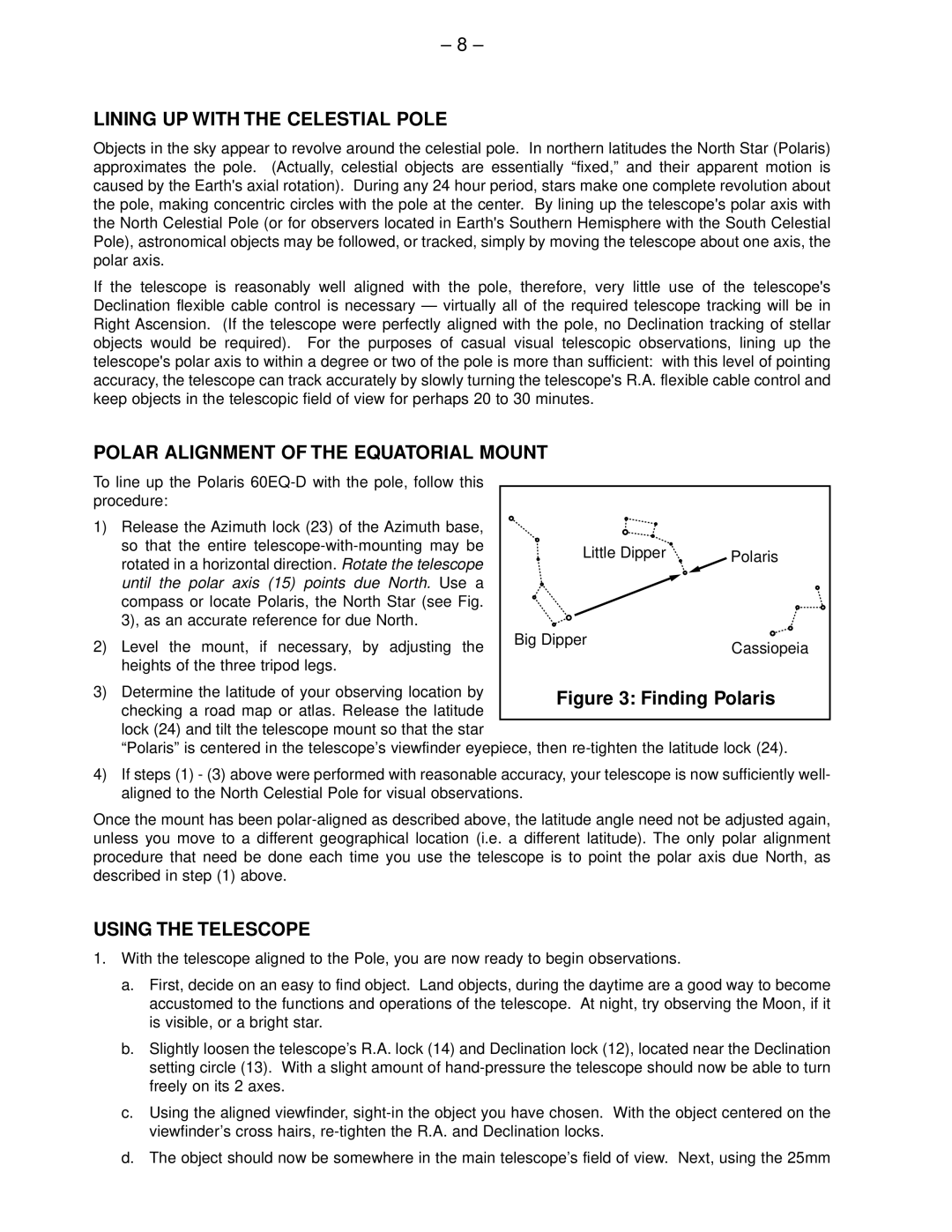
– 8 –
LINING UP WITH THE CELESTIAL POLE
Objects in the sky appear to revolve around the celestial pole. In northern latitudes the North Star (Polaris) approximates the pole. (Actually, celestial objects are essentially “fixed,” and their apparent motion is caused by the Earth's axial rotation). During any 24 hour period, stars make one complete revolution about the pole, making concentric circles with the pole at the center. By lining up the telescope's polar axis with the North Celestial Pole (or for observers located in Earth's Southern Hemisphere with the South Celestial Pole), astronomical objects may be followed, or tracked, simply by moving the telescope about one axis, the polar axis.
If the telescope is reasonably well aligned with the pole, therefore, very little use of the telescope's Declination flexible cable control is necessary — virtually all of the required telescope tracking will be in Right Ascension. (If the telescope were perfectly aligned with the pole, no Declination tracking of stellar objects would be required). For the purposes of casual visual telescopic observations, lining up the telescope's polar axis to within a degree or two of the pole is more than sufficient: with this level of pointing accuracy, the telescope can track accurately by slowly turning the telescope's R.A. flexible cable control and keep objects in the telescopic field of view for perhaps 20 to 30 minutes.
POLAR ALIGNMENT OF THE EQUATORIAL MOUNT
To line up the Polaris
1) Release the Azimuth lock (23) of the Azimuth base, |
|
| |
so that the entire | Little Dipper | Polaris | |
rotated in a horizontal direction. Rotate the telescope | |||
|
| ||
until the polar axis (15) points due North. Use a |
|
| |
compass or locate Polaris, the North Star (see Fig. |
|
| |
3), as an accurate reference for due North. |
|
| |
2) Level the mount, if necessary, by adjusting the | Big Dipper | Cassiopeia | |
| |||
heights of the three tripod legs. |
|
|
3) Determine the latitude of your observing location by checking a road map or atlas. Release the latitude lock (24) and tilt the telescope mount so that the star
“Polaris” is centered in the telescope’s viewfinder eyepiece, then
4)If steps (1) - (3) above were performed with reasonable accuracy, your telescope is now sufficiently well- aligned to the North Celestial Pole for visual observations.
Once the mount has been
USING THE TELESCOPE
1.With the telescope aligned to the Pole, you are now ready to begin observations.
a.First, decide on an easy to find object. Land objects, during the daytime are a good way to become accustomed to the functions and operations of the telescope. At night, try observing the Moon, if it is visible, or a bright star.
b.Slightly loosen the telescope’s R.A. lock (14) and Declination lock (12), located near the Declination setting circle (13). With a slight amount of
c.Using the aligned viewfinder,
d.The object should now be somewhere in the main telescope’s field of view. Next, using the 25mm
